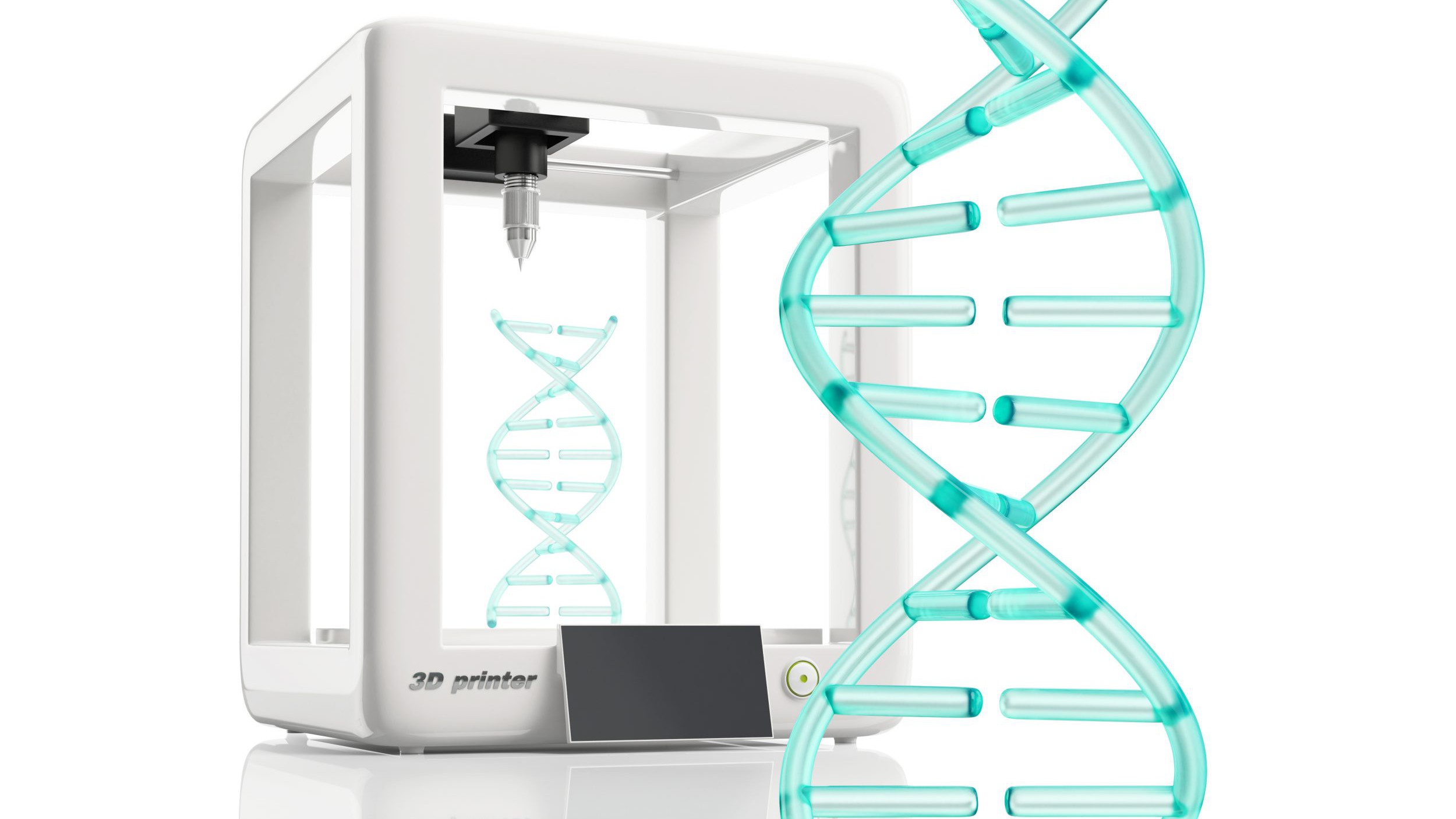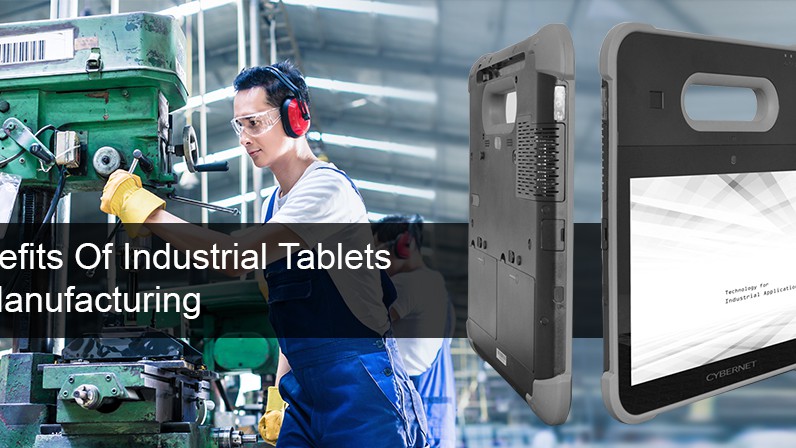3D printing, also known as additive manufacturing, is a production process that has been helping manufacturers keep their systems running smoothly. When paired with an industrial panel PC, 3D printers are able to follow a digital model to create an object of any shape using a wide variety of materials. Various plastics, powders, resins, metals, graphite, graphene, and even paper can be used for printing. The result is a diverse array of strong, reliable parts that can be used to repair a disabled machine or to complete a spacecraft bound for the cosmos. Because of its versatility, the application of 3D printing is simplifying maintenance and repair needs in the manufacturing industry.
How it Works
Article Guide
Most manufacturers have some older machines running in their factories. They are expensive to replace and disrupt production when they break down. Not to mention, the purchase of a brand new machine upsets existing workflows as there is always a learning curve with new equipment. For these reasons, most manufacturers hold on to spare parts for the inevitable repairs that crop up during the life of each machine.
3D printing works to eliminate the need for wasteful supplies of spare parts. When a machine component breaks down, the design needs only to be downloaded to or drafted on a reliable computer and the connected 3D printer will craft the part. The simplicity of this process cuts out so many of the steps that typically occur between discovering the problem and repairing it, that it is truly an efficient solution.
Why it Works
The reason 3D printing is such an effective tool is partly because it can build anything if the printer has a detailed model to reference. Industrial computers, for example — with their fast processors and powerful graphics cards — can easily handle programs like AutoCAD while smoothly transmitting such data to a 3D printer. Factor in their ability to handle fluctuating factory conditions, and they are the ideal partner to a 3D printer in a manufacturing setting.
Thanks to their extensive building potential, 3D printers maximize a company’s financial capabilities. Handling repairs in-house directly impacts a company’s Maintenance, Repair, and Overhaul (MRO) operations. If a company spends less on MRO, those saved funds can be applied wherever else they are needed.
The ability to print machine components on an as-needed basis is not only cost-effective, it extends the life of factory equipment and streamlines factory operations that would otherwise be far more complex. For example, damaged legacy equipment that would typically be retired can be restored to working condition, and what may normally have taken weeks or months could be resolved in a matter of days.
3D Printing is Cost Efficient
3D printing, in and of itself, is cost-efficient because it builds objects from the bottom-up, connecting thousands of small layers to eventually create the desired object. Because every single stroke of the machine is intentional, no materials are wasted in the process. This can be a highly desirable aspect of these machines, especially when working with costly materials like titanium.
In addition to being economical in their use of materials, their ability to craft items regardless of shape or complexity is another major bonus. If a factory had a 3D printer working in concert with an industrial computer, the creation process becomes much more intuitive. Any part, for any machine, can be crafted from a digital design. An industrial PC is the perfect stage for such drawings because of its high processing power, detailed display, and (best of all) its chemically hardened touch glass — a perfect build combination for the industrial workspace.
Such a setup frees up storage space once occupied by spare parts, eliminates the need to locate obscure or discontinued machine components, and significantly reduces the downtime of a busted machine.
Extend the Lifespan of Legacy Equipment
As mentioned previously, legacy equipment can be more difficult to repair than newer technology and highly disruptive to replace. Should a piece of the equipment fail, finding a replacement part can prove difficult if what you need has been discontinued. Should you happen to find it, or find a place that can make it, you are likely to encounter a minimum purchase requirement or be forced to wait for production and delivery. Manufacturing companies outfitted with industrial computers find it easier to accommodate in-house 3D printing which allows them to get equipment back on track more quickly.
A great example of this is Hansford Parts and Products, a machine shop that used 3D printing to remanufacture parts for a 50-year-old machine. A bearing failure led to one of the gears on their mill losing a few teeth. Instead of abandoning the machine, the broken teeth were 3D printed to put the mill back in working order.
Streamline Factory Processes
Despite the implications of printing in layers, 3D printed objects can be complex enough to have moving parts like wheels and hinges. This ability to consolidate components is a major part of what streamlines factory processes. Rather than producing numerous parts which will then have to be assembled, 3D printing allows for such items to be crafted in fewer pieces. This also boosts the strength and stability of the item which reduces future maintenance costs.
Rocket Lab, an aerospace company in California, utilized 3D printing in this manner. In 2013, the company was printing rocket engine components like combustion chambers and propellant valves. In July of 2019, they completed their 100th iteration of a 3D-printed engine. Not only was it less expensive and manufacturable in days instead of months, it also delivered unmatched performance and 100% launch reliability. This achievement can easily be attributed to the reduced number of production steps as the team was able to create new designs and test a greater number of prototypes more frequently. While this isn’t exactly a repair scenario, it is an impressive testament to how quickly 3D printing can produce the needed parts compared to traditional methods.
3D printing’s innovative capabilities are extremely diverse; if it can be imagined it can probably be created. In addition to the printer itself, an industrial panel PC would make the ideal design partner. Not only will images be rendered quickly and in high resolution, the physical build of the computer would make it possible to print anywhere. The durable design protects the computer from water, dust and traveling particles, and shields it from impacts and other factory hazards.
Simplified Repairs Lead to Increased Profits
With the help of industrial-grade computers to facilitate design conception, 3D printing is bringing cost efficient repair solutions to manufacturing facilities. By extending the life of existing equipment and streamlining factory workflows, these machines are leading the charge in on demand manufacturing.
If you are considering a 3D printer for your company, implementing a powerful, industrial-grade computer in the design process is an important part of a successful deployment. For more information on how you can get started with a more self-reliant approach to your manufacturing, contact an expert from Cybernet today.
3 Challenges to 3D Printing in Healthcare
April 5, 2022
Additive manufacturing, more popularly known as 3D printing, has advanced enough to create toys, figurines, and parts for more complex machines. Now imagine a world where they print three-dimensional objects like the…
0 Comments7 Minutes
Benefits Of Industrial Tablets In Manufacturing
November 9, 2016
Industrial tablets are becoming increasingly popular in the manufacturing sector. Taking a more pragmatic approach than consumer-focused enterprises, manufacturing environments choose to deploy military grade tablets…
0 Comments8 Minutes
You Can't
Learn from a Pop-up
But we can deliver knowledge to your inbox!
We dive deep in the industry looking for new trends, technology, news, and updates. We're happy to share them with you.
Knowledge, News, and Industry Updates Right in Your Inbox




